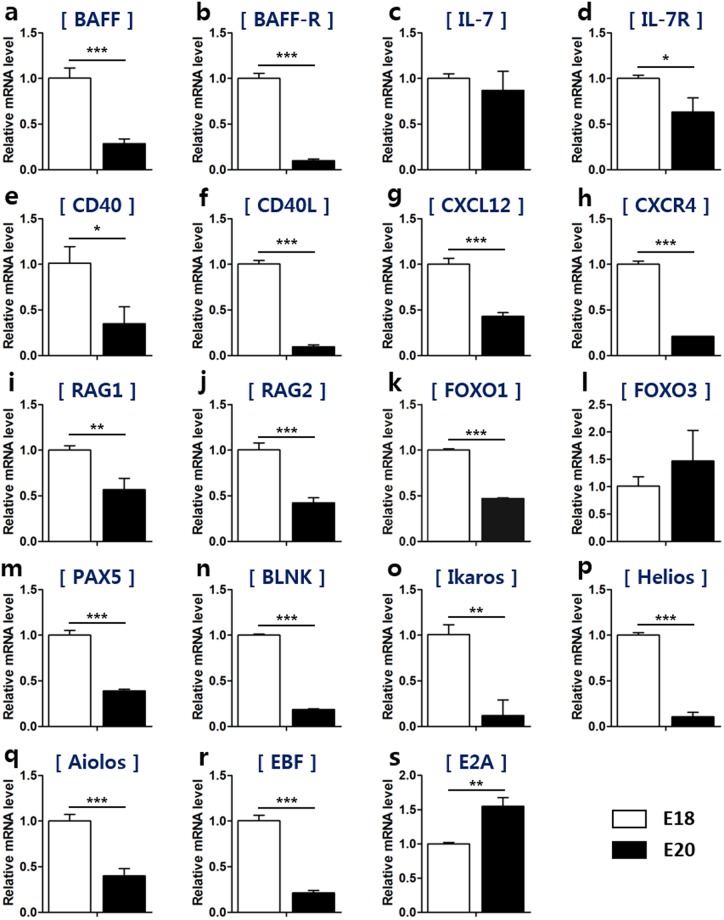Figure 5.
Large B cells are the main source of proliferation and differentiation in the embryonic stage. To explore whether the proportion of small and large B cells affects the status of B cells during the development, we chose two stages where the ratio of small and large B cells are dramatically reversed. Cells in the large B cell dominant stage (E18) and a small B cell dominant stage (E20) were sorted using Bu-1 positive selection, and then total RNA was extracted. (a–h) The mRNA expression of B cell proliferation- and colonization-associated genes in small and large B cells was evaluated using qRT-PCR as follows: (a) BAFF, (b) BAFF receptor, (c) IL-7, (d) IL-7 receptor, (e) CD40, (f) CD40 ligand, (g) CXCL12, and (h) CXCR4. (i–s) The mRNA levels of B cell differentiation-associated genes in small and large B cells were examined using qRT-PCR as follows: (i) RAG1, (j) RAG2, (k) FOXO1, (l) FOXO3, (m) PAX5, (n) BLNK, (o) Ikaros, (p) Helios, (q) Aiolos, (r) EBF, and (s) E2A. *P < 0.05, **P < 0.01, ***P < 0.001.

